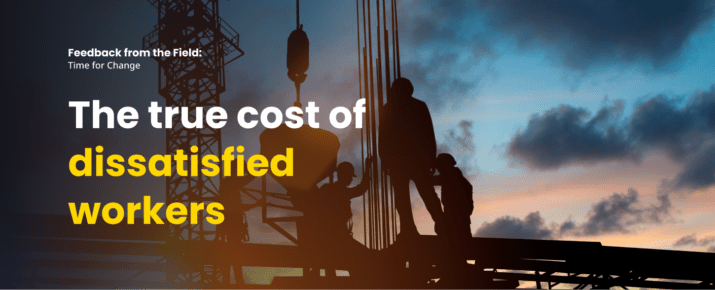1 in 4 Americans hesitant to ask their boss to socially distance: our survey with YouGov
Feedback From The Field | Industry Trends | By | 12 Nov 2020 | 3 minute read

It’s clear that the world of work has changed. COVID-19 upended workplaces worldwide as organizations made an abrupt shift to remote working. Now, with the prospect of returning to the office on the horizon for many Americans, we’ve found that 1 in 4 workers are hesitant to ask their superiors to wear a mask*.
SafetyCulture teamed up with national survey organization YouGov to survey over 2,500 Americans about their thoughts on workplace safety and quality as companies navigate a return to the office.
So what did our survey find?
Over 8/10 of survey respondents (81%) are confident that their workplace has or will take the appropriate actions to put safety checks in place for a safe return to the office*. However, if concerns with safety or compliance were to arise, Millennials would be the most likely to speak up compared to Gen Z, Gen X, and Baby Boomers.
Of those we surveyed*:
- 1/4 male respondents (27%) and 1/5 female respondents (20%) are unlikely to ask a colleague or boss to put on a mask, wash their hands, or distance themselves.
- Nearly a quarter of respondents (22%) are unlikely to speak up if a work meeting room is deemed overcapacity.
- More than 1/5 respondents (21%) are unlikely to wear a mask for an entire day at work
- 15% of respondents admit they are unlikely to social distance.
What does a safe workplace look like for Americans?
The majority of these workers agree that their trust and confidence in a workplace would increase with certain safety measures put in place, including*:
- Temperature check protocols upon entry (55%)
- Social distancing protocols which are monitored and enforced (59%)
- A real-time list of thorough cleaning and disinfecting activities being completed regularly, throughout the day for high traffic areas (60%)
- Readily available mask and hand sanitizer supplies available for free with their use being enforced in all areas of the workplace (63%)
What does this mean for businesses moving forward?
October 2020 was a month of frightening COVID-19 records. Risk management is crucial and companies will need to raise their game. What that looks like is more than just reconfiguring the office with plexiglass.
Our survey found clear trends toward inaction, both in social distancing compliance and speaking up about it. Bob Butler, General Manager, Americas, SafetyCulture cautions against a top-down approach to enforcing safety in workplaces:
“Companies which will survive and thrive today are those which proactively lean into challenges, encourage employee feedback, and take ownership of risks. They build visibility across their workplace through real-time data capture, and they empower all workers to have a voice when it comes to safety.”
“Organizations must actively encourage employees of all levels to speak up when something raises a concern in the workplace. Everyone needs to take responsibility to create a genuine culture of safety, from the frontline to senior management. One way of doing this is by investing in the right tools that enable employees to be the eyes and ears of the organization,” he says.
Businesses can adopt practices like digitizing government guidelines and standards into checklists. With over 100,000 free digital checklist templates underpinned by government guidance, you can easily implement regular and thorough COVID-19 checks with iAuditor. Turn completed checklists into public and collaboratives reports, so employees will have full visibility through real-time data capture.
Building a culture of safety starts with the right tools — ones that will encourage transparency from the ground up.
Ready to revamp your workplace procedures? Download this report for best practice operations tactics to enable innovation and mitigate risk.
*All figures, unless otherwise stated, are from YouGov Plc. Total sample size was 2578 adults, 802 of which were employed adults who are or will be returning to their place of work. Fieldwork was undertaken between 23rd – 27th October 2020. The survey was carried out online. The figures have been weighted and are representative of all US adults (aged 18+).
Important Notice
The information contained in this article is general in nature and you should consider whether the information is appropriate to your specific needs. Legal and other matters referred to in this article are based on our interpretation of laws existing at the time and should not be relied on in place of professional advice. We are not responsible for the content of any site owned by a third party that may be linked to this article. SafetyCulture disclaims all liability (except for any liability which by law cannot be excluded) for any error, inaccuracy, or omission from the information contained in this article, any site linked to this article, and any loss or damage suffered by any person directly or indirectly through relying on this information.





